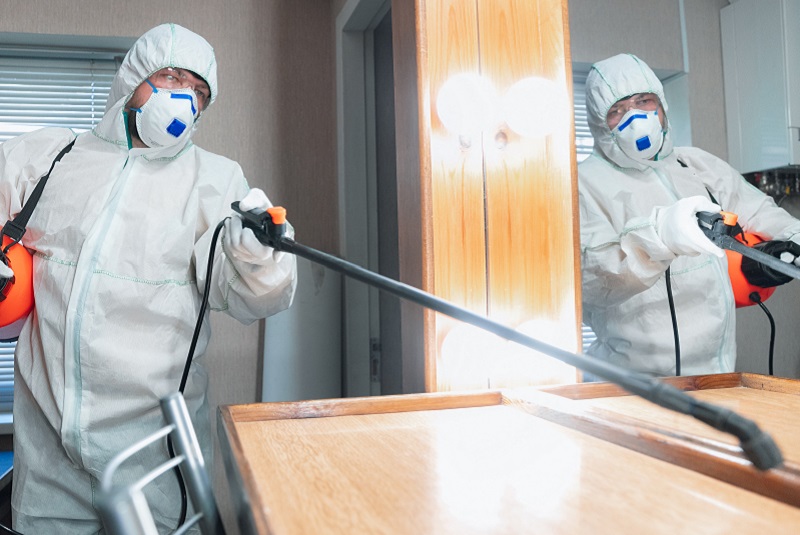
In fact, recent circumstances have caused governments across the world to understand the significance of healthcare facilities and to relook at them from a hygiene perspective.
Keeping healthcare facilities safe and clean for patients and medical staff should always be a priority, but this isn't always the case. According to the Centers for Disease Control and Prevention (CDC), approximately 100,000 people die every year from diseases acquired inside US hospitals. Studies also reveal that in healthcare facilities 67% of soap buckets
tested harboured bacteria and 93% of cleaning towels samples contained live bacteria. These facts are sufficient to highlight some failures of traditional cleaning systems. Apparently, placing hand sanitizers and signages in common areas isn’t enough to make a real impact. To ensure we achieve the highest levels of hygiene in healthcare settings requires understanding the science behind surface wiping and cleaning, says Kimberly-Clark Professional.
Understanding the difference between cleaning, disinfecting and hand sanitizing
“Objects that are touched by lots of people throughout the day should be cleaned and disinfected frequently in order to break the chain of germ transmission. But many of our customers are needing to think in a different way about what, how and how often they clean, to keep people safe,” says Ahmad Abublan, General Manager (Middle East and North Africa), Kimberly-Clark Professional. “Understanding the difference between cleaning and disinfecting enables facilities to manage hygiene more effectively and prioritise frequently touched surfaces,” he adds.
1. CLEANING
Removes germs, dirt, and impurities from surfaces or objects. Cleaning works by using soap (or detergent) and water to physically remove germs from surfaces. This process does not necessarily kill germs, but by removing them, it lowers their numbers and the risk of spreading infection.
2. DISINFECTING
This step kills germs on surfaces or objects. Disinfecting works by using chemicals to kill germs on surfaces or objects. This process does not necessarily clean dirty surfaces or remove germs, but by killing germs on a surface after cleaning, it can further lower the risk of spreading infection.
The CDC recommends a two-step daily routine to clean frequently touched surfaces. First, clean the surface with a detergent or soap and water. Second, disinfect it using an EN-registered disinfectant. The CDC guidelines also recommend providing disposable wipes so that commonly used surfaces can be wiped down before each use. Surfaces considered hot spots for germs also include computer keyboards, phones and light switches. Science indicates why these surfaces need daily hygiene protocols in addition to hand hygiene standards in facilities.
3. HAND SANITIZING
This kills germs on the body (hands). The FDA regulates all topical antiseptic products such as hand sanitizers. These products are intended to be used when soap and water are not available and are not rinsed off with water.
Hospital cleaning best practices: how to keep patients and staff safe
1. Use appropriate personal protective equipment (PPE)
The improper use of gloves, masks, respirators, hair nets, gowns, etc leads to the spread of dangerous bacteria and viruses. Assigning different PPE for different tasks, patient rooms, and jobs involving heavily soiled items could be the key to prevent cross contamination. In addition to this, PPE must always be changed between patients. Besides this, the healthcare staff must comply with basic hand hygiene and keep washing their hands everytime PPE is removed.
2. Keep sanitizing high touch areas
A study compiled by Kimberly Clark Professional suggests that adults touch 7,200 surfaces and also touch their face 552 times in the span of 24 hours. This emphasizes why in today’s current conditions tougher hygiene protocols are required. Every hospital administrator should direct staff to constantly clean and disinfect the frequently touched surfaces like bed rails, doorknobs, phones, and remote controls in patients' rooms since they are more prone to be contaminated with dangerous bacteria and viruses
3. Start from the cleaner areas, then proceed to the dirtier ones
A frequent practice in modern commercial cleaning is starting from the dirtiest places (like restrooms) and moving on to cleaner parts of the facility. This increases the chances of spreading disease-causing particles from the former to the latter. Hospital cleaning must progress from the cleaner areas to the dirtier ones to reduce the chances of cross contamination.
4. Use no-touch cleaning systems wherever possible
One of the biggest challenges for health care cleaning crews is removing and disposing of contaminants. The traditional mops almost guarantee cross contamination. Modern no-touch cleaning systems offer a comprehensive solution to this problem. They use a certain technique of spraying, vacuuming, and disposing of contaminants which ensures that no virus/bacteria leaves the room.
5. Dispose contaminated materials safely
Knowing how to dispose of contaminated materials (soiled linens, dirty cleaning fluids, or contaminated biological materials) is as important as the process of cleaning itself. Make sure there is no chance for contamination during removal.
Hotspot areas to be cleaned in healthcare facilities

While placing hand sanitiser and signage in offices and common areas is a step in the right direction, studies show it simply is not enough to make a real impact. No matter which surface areas they come into contact with throughout the day, give your employees, visitors and patients greater peace of mind by providing proven cleaning and disinfecting solutions to help break the chain of germ transmission. In the midst of change, creating exceptional healthcare facilities includes doing everything you can to ensure that we all use proper hand hygiene protocols and that shared surfaces are clean and hygienic.


.jpg)
 Search
Search




